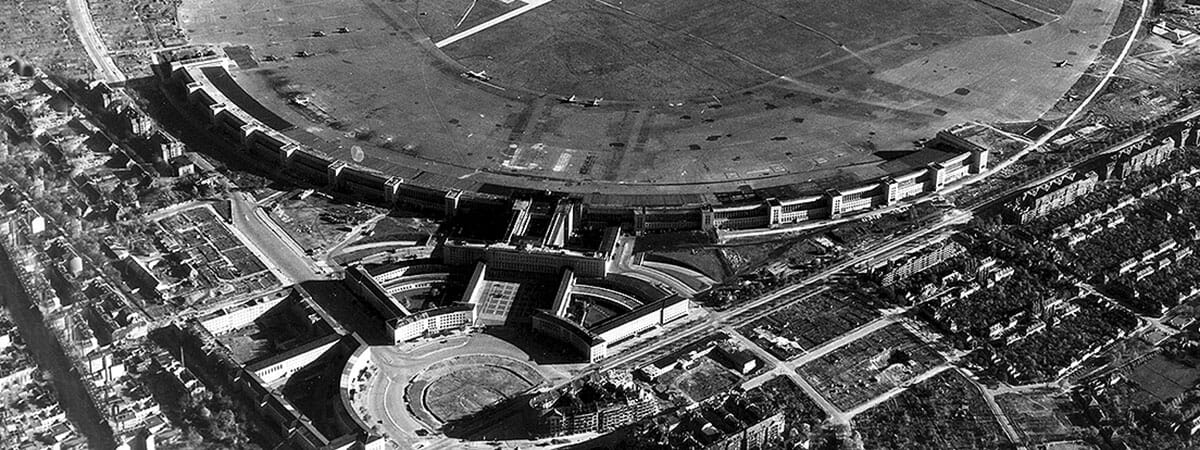In contrast to the American model illustrated in the first instalment of this article (see here), the development of airports in Europe has been driven by the various states. It has always been almost a matter of national pride, image and prestige. All the efforts made by the aviation industry during the military race subsequently focused on commercial aviation. In fact, even today, the countries that already then were the focus of this activity are the main players in Europe’s aviation industry: Germany, the United Kingdom, Spain and France.
The business model in airports seems to have consolidated, as operators attempt to strike a difficult balance between efficiency and dazzle. A streamlined process and the “wow” effect.
Let’s look at the most significant cases that provided the starting point for this in Europe: airports in the major European capitals.
The first terminals in the Old Continent
The Croydon airport in London (UK) was the UK’s main airport during the inter-war period, and its influence on the development of civil aviation, such as we know it today, is unquestionable.
Operating as an airport since 1920, Croydon was home to the base of operations of Imperial Airways, the original British airline, created in 1924, and precursor to British Airways. Two years later, the British parliament approved the first major upgrade to the airfield, which marked a significant milestone in the development of airports and, in particular, of terminal areas. For the first time, two new functional structure types were planned and built: the airport passenger terminal and the air traffic control tower.
The progress was enormous, since departure and arrival operations had never been segregated, resulting in a highly efficient sequence for all the key processes of both operations. And this was all achieved, of course, with no previous experience.
Croydon was the starting point for everything that would happen in quick succession in subsequent years as far as airport architecture was concerned.
As would happen with virtually every similar example from these early years of progress, rapid technological advances in the aviation sector, which translated into ever-larger aeroplanes, as well as the physical impossibility of enlarging it, due to London’s expansion to the south, caused Croydon to become obsolete and to shutter its doors for good in September 1959.
Despite this, the first passenger terminal in history is perfectly preserved and is open to visitors to this day.
The Barajas Airport in Madrid (Spain) is a prime example of a lack of long-term vision. In 1929, a competition was held for ideas, which was won by the architect Luis Gutiérrez Soto. As a result of the tumultuous political situation, as well as Madrid’s superfluous location at the time with respect to Mediterranean airports (monopolised by France’s aeropostal airlines), he was unable to anticipate the possibilities that commercial aviation would bring with it in the future.
Gutiérrez Soto designed a very modest terminal intended only for the elites who could afford to fly. Conceived as a “Flying Club”, the building had a naval aesthetic, which was a recurring theme in the first airport buildings. However, after the two major wars, when circumstances again allowed the growth of civilian flights to resume, the airport soon became obsolete and was demolished, giving way to a new terminal in 1953.
The French case was radically different. Already in 1914, the airport of Le Bourget in Paris (France) was operating as a military airfield and, in 1919, the first scheduled flights between Paris and London were inaugurated. It was first expanded five years later, and it was there, in 1927, that Charles Lindbergh landed.The airport was a national icon, the airfield with the most air traffic in Europe. On the occasion of the 1937 Universal Exposition, the government decided to issue a tender to expand the airport.
The result was a surprising exercise in foresight from the architect Georges Labro, who proposed a modular, concrete-vaulted structure located between existing hangars, which was repeated along the platform. The intention was very clear: to make room for subsequent expansions.
The project was similarly visionary in that it separated the cargo and baggage facilities from passenger services, with the design even including a hotel in this area. An early sign of the large, multifunctional space that is so often repeated these days is the large main concourse.
The airport remained in service until almost the 1980s, when it was repurposed into an air museum.
The Tempelhof airport in Berlin (Germany) was a contemporary of the previous ones. In this case, mainly for political reasons, its layout was radically different, with a significant jump in scale. In fact, Tempelhof was erected as the largest building of its time.
The airport owed its existence to a field for sports flights and air shows, and by 1929 it already had a simple terminal, the work of architects Paul and Klaus Enger. Just four years later, the rise to power of the National Socialist Party entailed a radical change in the way aviation was viewed, becoming the perfect propaganda weapon. Despite this being the main factor in the decision-making, the fact remains that their ability to anticipate the size and complexity of future airports was nothing short of clairvoyant.
The building described below was sized to service 30 times the number of passengers that it handled in the early 1930s. This is why it remained operational until 70 years later with barely any modifications.
The person tasked with its design was Ernst Sagebiel, who just a few months earlier, while still under the direction of Erich Mendelsohn, had completed the project for the building that housed the newly-created Air Ministry. Sagebiel designed a monumental building for the airport, with a surprisingly functional layout for the time, one that was fully consistent with what would typically be found many years later in an airport. It included spaces such as a check-in concourse, with separate counters, security controls and customs in the arrival and departure lounges. Boarding areas, and technical and administrative spaces. And it also had a decisive new feature for future developments: baggage handling on the lower floor.
The standout attraction of the complex, however, was a huge, 1,200-metre long metal canopy (the one in T4 in Madrid is 1,400 metres long) that, already on the airside, protected passengers accessing the aircraft. In addition, the roof could shelter up to 65,000 spectators, in anticipation, of course, of the massive propaganda events of the Führer himself.
The architectural language, very much in keeping with Nazi aesthetics, was a mix of classicism and rationalism. On the “landside”, a huge reception atrium was created, surrounded by stone-faced volumes, with a rhythmic composition of windows and pilasters. On the airside, however, there were no concessions to aesthetics: the huge metal structure of the large roof is reminiscent of the Age of Aviation.
In conclusion
Despite the initial differences between the American and European models, in a globalised world such as today’s, the most successful airport advances are rapidly adopted by one airport after another. In fact, there are numerous airport operators that manage airports on both continents. The business model seems to have consolidated, as operators attempt to strike a difficult balance between efficiency and dazzle. A streamlined process and the “wow” effect. They are doing this by relying on the increasingly common mixed investment, or PPP (public-private partnership), models.
This public-private duality guarantees (or should at least) that this investment will be profitable and has a viable financial model. At the same time, however, it is also a guarantee that a terminal is not being designed as if it were made by “IKEA”, where all that matters is the passenger journey through a commercial space where the price of admission, in this case, is our own boarding pass.



